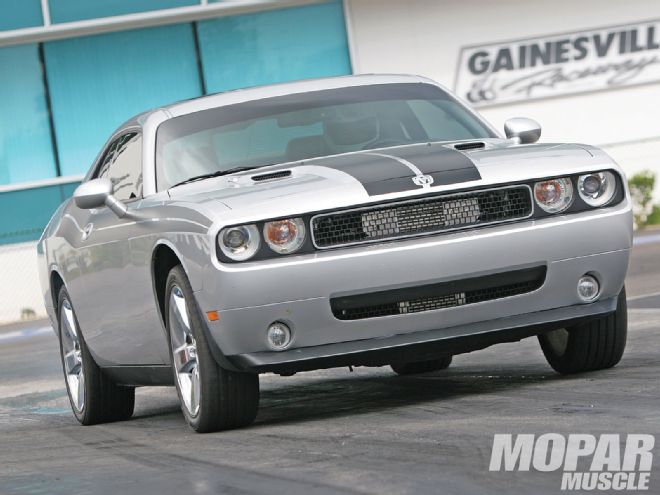
When considering the parts of a high-performance vehicle, we often pay a lot of attention to the power the engine makes, the strength and gearing of the transmission, and the rear differential's ratio and durability. However, there's another important link in any powerful car, between the engine and transmission, that plays an important role in the car's performance. Whether it's a torque converter in an automatic application or a clutch in a manual transmission car, the improper part in this area can make or break the way the vehicle launches and responds, and it affects durability as well. And while the wrong torque converter may not offer optimal performance, the wrong clutch can literally self-destruct, slipping and heating itself up until it won't work at all.
It's no secret that the new 5.7 and 6.1 Hemi-powered Mopars have plenty of power to test the traction and drivetrain parts of these new cars. The 6.1 Hemi is particularly strong, and with aftermarket bolt-on parts like cold air kits, tuners, nitrous oxide, and even blowers available for these vehicles, many of the factory parts behind the engine are taxed to their limit. Since the factory clutches in these cars were designed with longevity in mind and were built to handle stock power and not much more, the clutch is likely one of the first items that will need to be replaced in your Mopar, whether preemptively or post-failure. The folks at SpeedFactory have lots of experience with fast late-model Mopars, so we decided to follow along as they replaced the factory clutch with a dual-disc unit from Centerforce.
If you're like many enthusiasts, you may hesitate to perform mechanical work on your late-model Mopar, assuming that it's just too complicated. And while the computers and wiring in these cars are no doubt more complex than what we find in our classic Mopars, performing work like removing the transmission to change the clutch is largely the same as it is in an older Mopar. So if you're comfortable changing the clutch in your Road Runner or Coronet, there's no reason you can't change the clutch in your new Challenger or Charger. If you don't have the tools or skills to perform the work yourself, we suggest you contact a shop like SpeedFactory that can install the clutch for you.
Like most cars, changing the clutch in a new Mopar requires getting the car off the ground with either a lift or jackstands, removing much of the exhaust, the shifter, driveshaft, and then transmission to gain access to the flywheel and clutch. With the proper tools and equipment, SpeedFactory's staff made this job look easy, quickly pulling the transmission and swapping out the clutch for the new Centerforce dual-disc unit. With not one but two friction discs, separated by a steel plate, this clutch system offers more than twice the clamping force of the factory unit, with similar pedal effort. Additionally, the Centerforce unit offers a nice blend of performance and drivability, with plenty of clamping force to keep the clutch from slipping, and a soft enough application that the clutch doesn't act like an on-off switch when the pedal is released.
If you're driving a late-model Mopar with a manual transmission, you'll eventually need to either replace or upgrade the factory clutch. Since the clutch is designed with a friction surface that wears, much like brake pads, it's not a matter of if, but when you'll have to accomplish the work. If you're like us and have already performed modifications to your car's engine, it's just a good idea to eliminate the factory clutch, replacing it with a more durable Centerforce unit. You'll no doubt appreciate the added performance, reliability, and peace of mind knowing that the clutch will handle all the power your Hemi can give it.